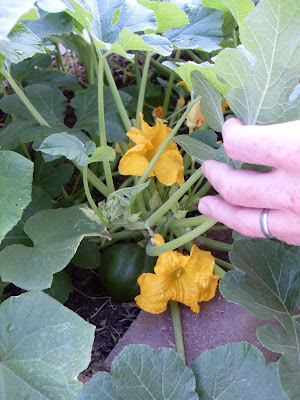 |
| Tomatoes - perhaps the hardest thing to grow in the desert. |
I do not pretend to know everything about tomatoes. However, being a gardener who has made a whole lot of mistakes and read up a lot I have learned some helpful things that I hope can help keep others from losing their tomato crop to environmental factors or disease. I do not even pretend to make this an all-inclusive list, though I really feel it is some of the best of what I have learned so far about growing tomatoes in the desert.
Overall Tips:
- In order to prevent foliage disease DO NOT overhead water. High Humidity/i.e. water + heat = foliage disease. Though I do not water in my greenhouse I am always fighting tomato foliage disease because of the high humidity.
Seeds & Sprouting:
-Choose tomato varieties that will best suit your area. Ask others who live around you what varieties work well and research if you don’t get the answer you like.
-Buy seeds from companies that agree with your philosophy of growing tomato plants. What is most important for you – hybrid seed, organic seed, or that it has been grown in an environmentally sustainable manner? My favorite company is one that selects their seed based on its ability to endure environmental extremes resist diseases, while still being open-pollinated.
-Keep seeds warm (around 75-80 degrees) to sprout. Once all plants are sprouted, turn off the heater and keep them cooler while keeping the light bright.
Transplants:
- When starting transplants indoors, provide as much light as possible and keep plants as close to the light as possible without burning them.
- Run a fan breeze over the plants or run your hands over the top of your transplants. By “petting” your plants you increase their stocky look (the goal is to have lots of foliage on a short plant.
-When setting out new tomato plants, use a paper collar or something of the sort to keep cutworms from killing your tomato start. Cutworms can live anywhere from under rocks to- well – anywhere!
Once Vines are in the Ground:
 |
| Lowered tomato plants - corn to the West |
- If you live in a hot climate, plant tomato plants in a trough (literally below ground). This technique does not work with overhead watering, but requires watering without water touching the leaves (such as using a soaker hose). Plant tomato plants far from large structures as walls and buildings release radiant heat. Provide tall west side shade for tomato plants. I grow corn, sunflowers, or create a wall of pole beans just west of my tomato plants. This allows tomatoes full sun for the first half of the day but shades them during the heat that can damage their foliage. Tomatoes love the sun but can only take so much heat. I have heard that sunflowers release growth inhibitors into the soil, though I do not think this has been too much of a problem for me due to the fact that I keep the soil for the shading plants sectioned off from the tomato soil.
Disease Control: Plant Mustard Greens then Marigolds around tomatoes.
Soil Conditioning: Plant bean plants around tomato plants until tomatoes are large enough, then cut bean plants down.
- Add a little bone meal and some compost deep in the hole you are seeking to plant in then add some more soil before transplanting. Tomatoes tend to really like bone meal.
- Watering: Water in a hole before putting the transplant in the ground. Then water the transplant well. Water every day, then every other day for a week or two. When the plant begins showing signs of growth after transplanting quickly decrease watering to once every 7 days. (Increasing the time of the watering sessions with decreasing water frequency). Even during the 107-110 degree days water, at most, once every 3 days. If you choose to water more than this you are growing tomatoes that have roots too close to the surface. Tomatoes with shallow roots are less able to reach nutrients, are more susceptible to changes in surface ground temperature extremes and consequently – are more susceptible to disease. Again, the less frequently you water, the longer the duration of watering should last. I water my tomato plants late at night for 3 hours in the middle of the summer. Another good practice is to water at the coolest part of a 24 day in which the water will not evaporate quickly afterwards.
- If you even suspect any lower leaves are diseased pull them off and dispose of them in the trash.
-Do not use tomato waste for compost. Tomatoes were bred to produce lots of fruit but are compromised by the number of diseases they can receive and produce.
- To prevent disease either rotate your tomato patch every 3-4 years or use completely new soil for your tomatoes each year. If you are rotating crops experts suggest planting a grain crop before tomatoes, as most grain plants do not share the same diseases as tomato plants.
-Mulching with finished compost helps to grow healthy tomato plants. In the midsummer finished compost mulch is nothing but a good thing.
Seed Saving:
























